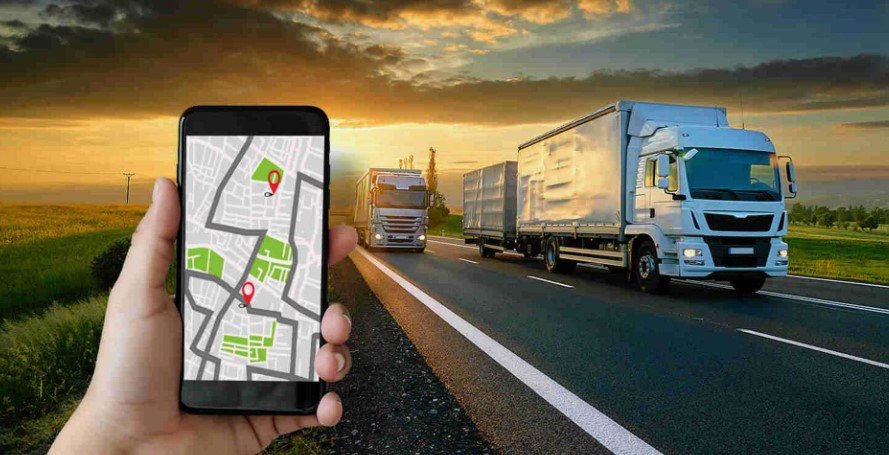The trucking industry has undergone significant transformations over the years, and one of the most impactful changes in the 2000s was the evolution of GPS technology. For truck drivers and fleet managers, GPS systems became indispensable tools for navigation, route optimization, and improving overall efficiency. This article explores how trucking GPS systems evolved during the 2000s, their benefits, and their lasting impact on the industry.
By understanding this evolution, readers can appreciate how technology has shaped modern trucking and why staying updated with advancements is crucial for success in the logistics sector.
The Early 2000s: The Rise of Basic GPS Systems
In the early 2000s, GPS technology was still in its infancy. Trucking companies began adopting basic GPS devices that provided simple turn-by-turn directions. These early systems were a significant upgrade from paper maps, but they had limitations. For instance, they often lacked truck-specific routes, which led to issues like low bridges or weight-restricted roads.
Despite these challenges, the introduction of GPS marked a turning point for the industry. Drivers could now navigate unfamiliar areas with greater confidence, reducing delivery times and improving customer satisfaction. Transition words like “despite” and “now” help emphasize the contrast between old and new methods.
Moreover, these early systems laid the foundation for more advanced features. Companies started to recognize the potential of GPS for improving logistics, paving the way for further innovation.
Mid-2000s: The Advent of Truck-Specific GPS
By the mid-2000s, GPS technology had advanced significantly. Manufacturers began developing truck-specific GPS devices that addressed the unique needs of commercial drivers. These systems included features like route customization based on vehicle size, weight, and cargo type.
For example, truck-specific GPS could alert drivers to avoid roads with low clearances or steep grades. This not only improved safety but also reduced the risk of costly accidents. Transition words like “for example” and “not only” help illustrate the benefits clearly.
Additionally, these devices often included real-time traffic updates, helping drivers avoid congestion and delays. Fleet managers could also track vehicles in real time, improving coordination and operational efficiency.
The mid-2000s marked a period of rapid growth for trucking GPS, as companies increasingly recognized their value. This era set the stage for even more sophisticated systems in the years to come.
Late 2000s: Integration with Fleet Management Systems
In the late 2000s, GPS technology became integrated with comprehensive fleet management systems. These systems combined GPS tracking with other tools like fuel monitoring, driver performance analytics, and maintenance scheduling.
For instance, fleet managers could now monitor fuel consumption and identify inefficient driving habits. This integration allowed companies to reduce costs and improve sustainability. Transition words like “for instance” and “now” highlight the practical applications of these advancements.
Furthermore, GPS data was used to optimize routes dynamically, considering factors like weather conditions and traffic patterns. This level of precision was unprecedented and significantly enhanced operational efficiency.
The late 2000s also saw the rise of cloud-based platforms, enabling real-time data access from anywhere. This innovation made it easier for fleet managers to make informed decisions and respond quickly to challenges.
The Impact of GPS on the Trucking Industry
The evolution of trucking GPS in the 2000s had a profound impact on the industry. It revolutionized how drivers navigated, how fleets were managed, and how companies operated.
One of the most significant benefits was improved safety. Truck-specific GPS systems reduced the risk of accidents by guiding drivers away from hazardous routes. Additionally, real-time tracking allowed fleet managers to monitor driver behavior and enforce safety protocols.
Another major advantage was cost savings. Optimized routes and fuel monitoring helped companies reduce expenses, while efficient scheduling minimized downtime. Transition words like “additionally” and “while” ensure a smooth flow between points.
Finally, GPS technology enhanced customer satisfaction. Faster deliveries and accurate ETAs became the norm, strengthening relationships between trucking companies and their clients.
Looking Ahead: The Future of Trucking GPS
As we move further into the 21st century, trucking GPS systems continue to evolve. Emerging technologies like artificial intelligence and autonomous vehicles are poised to take GPS capabilities to new heights.
For example, AI-powered GPS could predict traffic patterns and suggest optimal routes before drivers even hit the road. Similarly, autonomous trucks equipped with advanced GPS systems may soon become a reality, further transforming the industry.
To stay competitive, trucking companies must embrace these advancements and invest in modern GPS solutions. By doing so, they can continue to improve efficiency, safety, and customer satisfaction.
Conclusion
The evolution of trucking GPS in the 2000s revolutionized the logistics industry, offering unprecedented levels of efficiency, safety, and cost savings. From basic navigation tools to integrated fleet management systems, GPS technology has become an essential part of modern trucking.
As the industry continues to evolve, staying updated with the latest GPS advancements will be crucial for success. Companies that leverage these technologies will be better positioned to meet the demands of a rapidly changing world.
For truck drivers and fleet managers, the next step is clear: embrace innovation and explore how modern GPS solutions can enhance your operations. By doing so, you can ensure a smoother, safer, and more efficient journey ahead.




